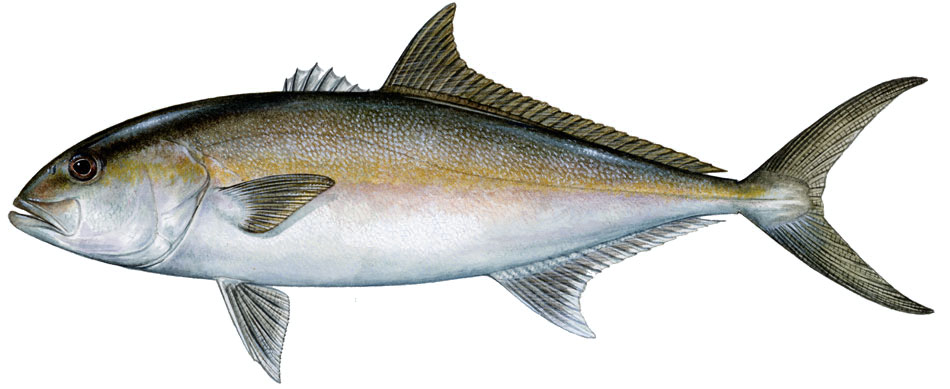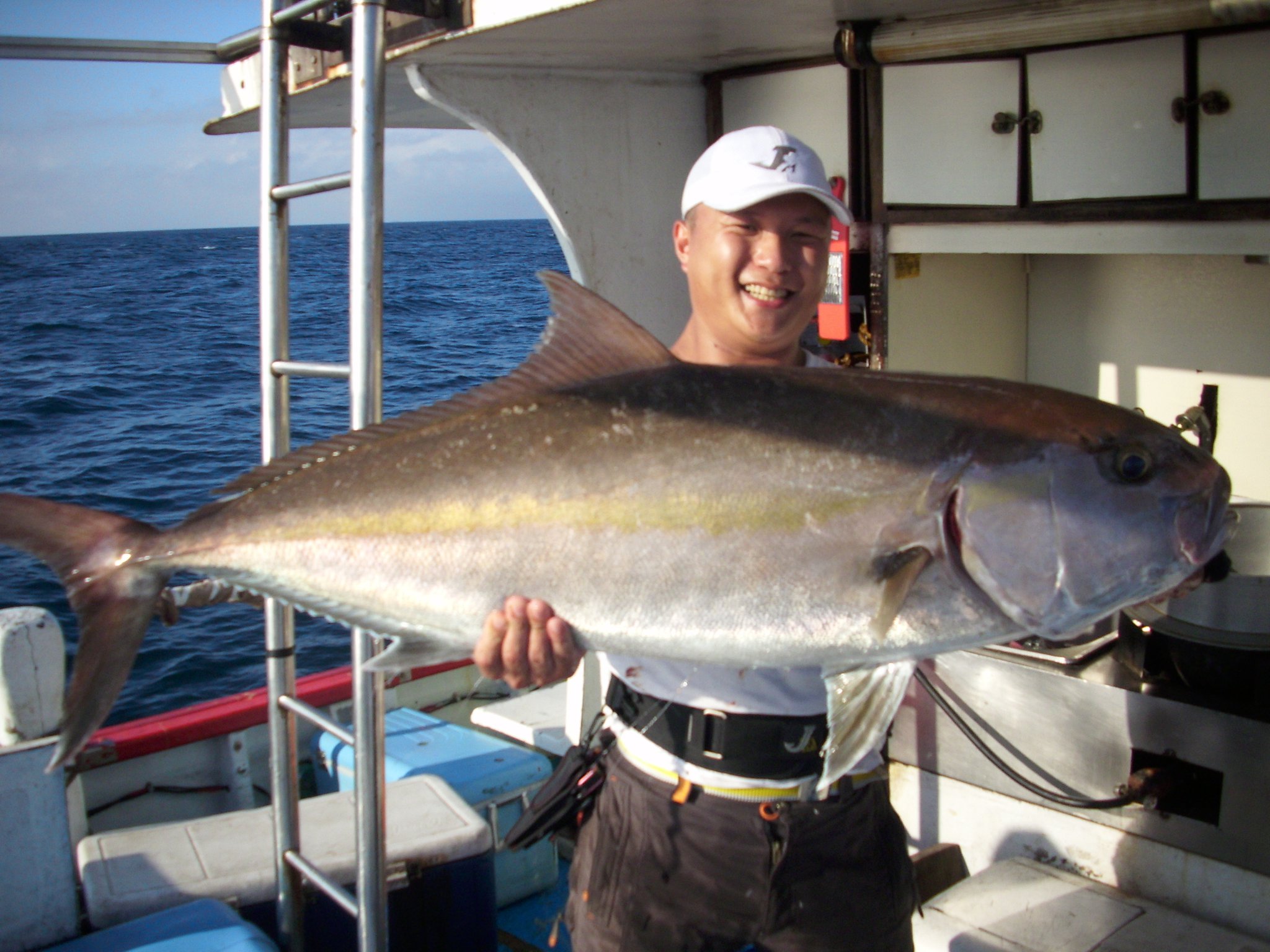Family: Carangidae
Scientific name: Seriola dumerili
Common names: Greater amberjack, amberjack, amberfish
Chinese name: 杜氏鰤
Habitat: Primarily a pelagic species found offshore in deep water, often over or near structures such as sunken reefs, pinnacles and oil platforms. They will occasionally move inshore near reefs, bays and drop-offs.
Size range: Average size is around 15 pounds (7 kg), but large specimens in the 40 to 50-pound range are not uncommon. The all-tackle record is 155 pounds 10 ounces.
 The greater amberjack is arguably the king of Taiwan’s offshore sport fishing targets. No doubt tunas, giant trevally and billfish and a host of other pelagic species have their diehard adherents, but few species send Taiwanese anglers into a rabid jigging frenzy like these brutes.
The greater amberjack is arguably the king of Taiwan’s offshore sport fishing targets. No doubt tunas, giant trevally and billfish and a host of other pelagic species have their diehard adherents, but few species send Taiwanese anglers into a rabid jigging frenzy like these brutes.
A larger cousin of the yellowtail, think of the amberjack as a yellowtail on steroids…with a healthy dose of ’roid rage thrown in for good measure. The amberjack’s powerful torpedo-like shape tells you it is built for speed, something immediately apparent to anyone with the good fortune of finding one on the end of their fishing line. They can be distinguished from other jacks by the diagonal “fighter stripe” that extends from the upper jaw, through the eye to the first dorsal fin.
 Edward Lee from Jigging Master shows off an amberjack. Along with selling tackle and jigging gear, Edward and Jigging Master arrange fishing trips. Click the pic to contact them.Late winter and spring are prime season for amberjack in Taiwan. They can be found offshore all around the island, but the waters between Taiwan and Japan are the prime hunting grounds for local anglers. Charter boats often seek out sonar marks near sunken reefs, submerged sea mounts and man-made structures like wrecks and drilling platforms. Vertical jigging is the preferred approach, with anglers dropping blade jigs to the proper depths and retrieving them with a rapid yo-yo action, then repeating until they get a hookup.
Edward Lee from Jigging Master shows off an amberjack. Along with selling tackle and jigging gear, Edward and Jigging Master arrange fishing trips. Click the pic to contact them.Late winter and spring are prime season for amberjack in Taiwan. They can be found offshore all around the island, but the waters between Taiwan and Japan are the prime hunting grounds for local anglers. Charter boats often seek out sonar marks near sunken reefs, submerged sea mounts and man-made structures like wrecks and drilling platforms. Vertical jigging is the preferred approach, with anglers dropping blade jigs to the proper depths and retrieving them with a rapid yo-yo action, then repeating until they get a hookup.
Greater amberjacks feed on crustaceans, squid and large baitfish. They are found both solitarily or in small schools. Amberjacks are highly desirable as an eating fish and are particularly prized for sashimi in Japanese cuisine. Care should be taken that fish are properly cleaned, as the species is suspected in cases of ciguatera poisoning.